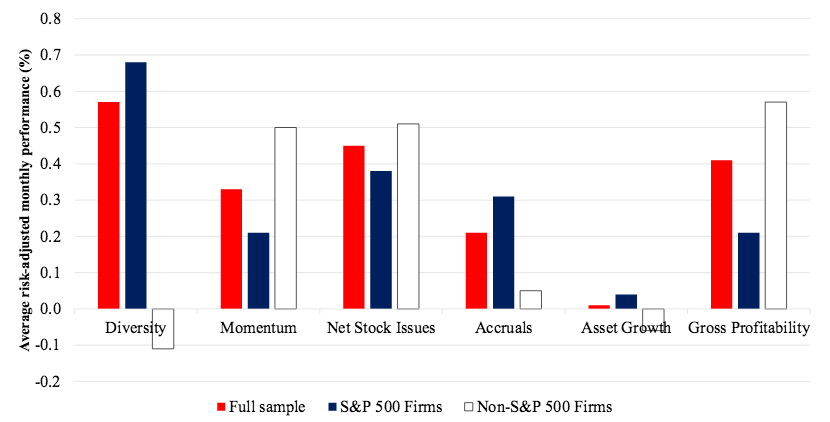Leo Kolivakis is a blogger, trader and independent senior pension and investment analyst. This post was originally published at Pension Pulse.
Barbara Shecter of the National Post reports, Ontario Teachers’ Pension Plan finds new chief investment officer in Denmark:
The Ontario Teachers’ Pension Plan has appointed a new chief investment officer to replace longtime CIO Neil Petroff, who retired in June.
Bjarne Graven Larsen, who will also serve as executive vice-president, takes the role Feb. 1, and will report to chief executive Ron Mock.
Graven Larsen is a former CIO and executive board member of Denmark’s largest pension plan, ATP, which is the fourth largest pension in Europe.
Most recently, however, he was chief financial officer of Novo A/S in Copenhagen, and before that he led the successful turnaround of Denmark’s sixth largest bank, FIH Erhvervsbank A/S, which was acquired by an ATP-led Danish consortium.“With his investment expertise, global experience, forward thinking on risk management, and importantly, hands-on work within a total return framework, Bjarne is uniquely positioned to be our Chief Investment Officer,” Mock said in a statement Monday.
“He has the experience and vision to lead our world-class investment team into our next generation of global growth.”
Graven Larsen will lead Teachers’ senior investment leadership team, which was recently restructured “to reflect the evolving global pension investment environment,” the pension plan said.
Divisions include infrastructure and natural resources, public equities, capital markets, portfolio construction, emerging markets, Asia-Pacific, real estate and investment operations.
Graven Larsen, who is also former managing director of Denmark’s largest mortgage bank and a former monetary policy director at Denmark’s central bank, said he has “admired the innovative work and success of Ontario Teachers’ for many years.”
Jennifer Paterson of Benefits Canada also reports, Ontario Teachers’ appoints new CIO:
The Ontario Teachers’ Pension Plan has appointed Bjarne Graven Larsen as executive vice president and chief investment officer (CIO), effective February 1, 2016.
Graven Larsen is the former CIO and executive board member of ATP, Denmark’s largest pension plan and the fourth largest in Europe. He was most recently the chief financial officer at Novo A/S in Copenhagen. Between these two engagements he led the successful turnaround of Denmark’s sixth largest bank, FIH Erhvervsbank A/S, which was acquired by an ATP-led Danish consortium.
Graven Larsen will head up Ontario Teachers’ senior investment leadership team, which was recently restructured to reflect the evolving global pension investment environment.
“With his investment expertise, global experience, forward thinking on risk management, and importantly, hands-on work within a total return framework, Bjarne is uniquely positioned to be our chief investment officer,” said CEO Ron Mock. “He has the experience and vision to lead our world-class investment team into our next generation of global growth.”
“I have admired the innovative work and success of Ontario Teachers’ for many years,” said Graven Larsen. “I consider this position to be a career opportunity of a lifetime and I look forward to learning from the outstanding team here and sharing my experiences with them as we work together to deliver members’ pensions.”
Lastly, Reuters also reports, Ontario Teachers appoints Danish investment veteran as CIO:
The Ontario Teachers’ Pension Plan (Teachers’), one of Canada’s biggest investors, has appointed veteran Danish investment professional Bjarne Graven Larsen as its new chief investment officer (CIO) and executive vice president.
Graven Larsen, 52, is a former CIO and executive board member of ATP, Denmark’s biggest pension plan and the fourth largest in Europe. He was most recently chief financial officer at holding company Novo A/S, majority shareholder in Danish insulin maker Novo Nordisk.
Teachers’, which is Canada’s third biggest public pension fund, said on Monday that Graven Larsen would report to its Chief Executive Ron Mock and be based in Toronto. He will take up the position on Feb. 1.
“With his investment expertise, global experience, forward thinking on risk management and, importantly, hands-on work within a total return framework, Bjarne is uniquely positioned to be our chief investment officer,” Mock said in a statement.
Teachers’ and peers like the Canada Pension Plan Investment Board and Caisse de dépôt et placement du Québec have been among the world’s most active dealmakers in recent years, with major bets on real estate, natural resources and infrastructure.
Teachers’ managed net assets worth 154.5 billion Canadian dollars ($109 billion) at the end of 2014.
Graven Larsen will succeed Neil Petroff, who retired in June.
Ontario Teachers’ put out a press release here which basically states a lot of what is stated above.
Bjarne Graven Larsen is a huge recruit for Ontario Teachers. He has unbelievable experience as a former CIO of ATP and as a monetary policy director at Denmark’s central bank.
He also has big shoes to fill as Neil Petroff who retired last year was unquestionably a great CIO. And before Neil Petroff, there was Bob Bertram, another great CIO who built Teachers’ investment divisions along with Claude Lamoureux.
In my last conversation with Ron Mock before Christmas, he told me they were on the verge of hiring a CIO. And they hired a veteran who was a CIO at ATP, arguably one of the best pension plans in the world (on par with OTPP and HOOPP, if not better, and highly regarded by everyone including Jim Keohane, CEO of HOOPP, who told me he reformed HOOPP’s asset-liability approach based on the one ATP is using).
This is a critical position and Ron Mock took his time recruiting someone who really knows his stuff. And I’m sure a lot of people within and outside Teachers’ wanted this position which not only has big perks like huge compensation, but is also responsible for overseeing private and public investments as well as hedge funds and the risk that is allocated between them.
The fact that Ron Mock, who has tremendous investment experience under his belt, hired someone with this experience tells me he wanted a veteran who is able to navigate what increasingly looks like a very difficult investment landscape. Ron also wanted someone who will command the same respect Neil Petroff had and someone who offers fresh eyes and views to the way Teachers’ invests across public and private markets.
Graven Larsen will now be responsible for a great investment team which includes Jane Rowe, John Sullivan, Michael Wissell, Wayne Kozun, Ken Manget, and Lee Sienna, just to name a few.
There is no doubt in my mind that Graven Larsen will be another great CIO for Ontario Teachers’ during what will be a very difficult period marked by global deflation and lower returns.
When I met Kevin Uebelein, AIMCo’s chief executive officer, here in Montreal in late November, he asked me my thoughts on separating the CEO and CIO function at public pension funds. He appointed Dale MacMaster as the chief investment officer responsible for private and public investments.
I told him flat out: “I don’t care if it’s Ron Mock, Mark Wiseman, Leo de Bever, Gordon Fyfe or you, I do not think any CEO of a major Canadian pension fund can successfully carry both CEO and CIO hats. And if you’re going to hire a CIO, make sure he or she is responsible for both private and public markets.”
Michael Sabia at the Caisse who has the least investment experience hired Roland Lescure as CIO but the latter is only in charge of public markets. Neil Petroff once told me on the phone that to be an effective CIO, you need to allocate risk across public and private markets and he was absolutely right.
I know people have different views on this matter. Gordon Fyfe once told me he likes being CEO and CIO but as I explained to him during our breakfast right before I was wrongfully dismissed from PSP in October 2006, “it’s stupid and leaves you exposed to all sorts of risks you have no idea of” (boy, that was an understatement).
Let me be crystal clear. I can’t take any CEO of any major public pension fund seriously if they don’t appoint an experienced CIO to oversee and allocate risk across public and private markets. I think it’s highly irresponsible not to do so.
Again, Ron Mock has more direct investment experience than all other CEOs at Canada’s Top Ten (apart from Jim Keohane who is equally investment savvy) and he still chose to find an exceptionally talented CIO to help him manage investment risks. That speaks volumes to Ron’s judgment and lack of investment ego.
I’m sure Gordon Fyfe is reading this and saying “everything worked well at PSP without a dedicated CIO” in charge of public and private markets. He is wrong, he was always wrong on this front. Period.
But let me not be too critical of Gordon, after all, I hear PSP is a total mess now after the departure of Bruno Guilmette, the head of Infrastructure and Jim Pittman, a senior VP of Private Equity. Neil Cunningham is still there as the head of Real Estate and Daniel Garant is CIO (of what exactly? public markets??) but the senior managers Gordon put in place have been forced out or are leaving on their own.
My sources tell me the culture at PSP is going from bad to terrible with a lot of infighting between and within investment teams and no real direction on where they’re heading. You can criticize Gordon Fyfe on many fronts, and God knows I have done so on my blog, but at least he kept cohesion in his senior ranks and kept a balance between anglophones and francophones (even if it was a boys club full of egos).
I don’t know what exactly André Bourbonnais is trying to accomplish but I suggest he takes me up on my lunch invitation and I will give it to him straight (have nothing to lose!). He needs to do a hell of a lot more to improve the culture at PSP and this means getting rid of some cockroaches at that place who are nothing more than backstabbing egomaniacs. I can say the same thing to Michael Sabia over at the Caisse. He too needs to shake things up in the senior ranks (and I’m not referring to Roland Lescure).
When I hear stories at all of Canada’s Top Ten on some power-hungry weasels backstabbing people, it makes my blood boil, especially since it’s typically these idiots that are responsible for poor performance and god awful culture at these big shops.
As far as Ontario Teachers’, I’m sure it has its share of backstabbing egomaniacs but that shit won’t fly with a guy like Ron Mock at the helm. And I doubt it will with a veteran outsider from Denmark like Bjarne Graven Larsen who is serious and focused on risk-adjusted returns.
The first article above states Teachers’ senior investment leadership team was recently restructured “to reflect the evolving global pension investment environment.” I have no details if this means some people were let go for poor performance or other reasons but knowing Ron, you better be focused on your job and be a team player or you’re out. It’s that simple.
Photo credit: “Canada blank map” by Lokal_Profil image cut to remove USA by Paul Robinson – Vector map BlankMap-USA-states-Canada-provinces.svg.Modified by Lokal_Profil. Licensed under CC BY-SA 2.5 via Wikimedia Commons












